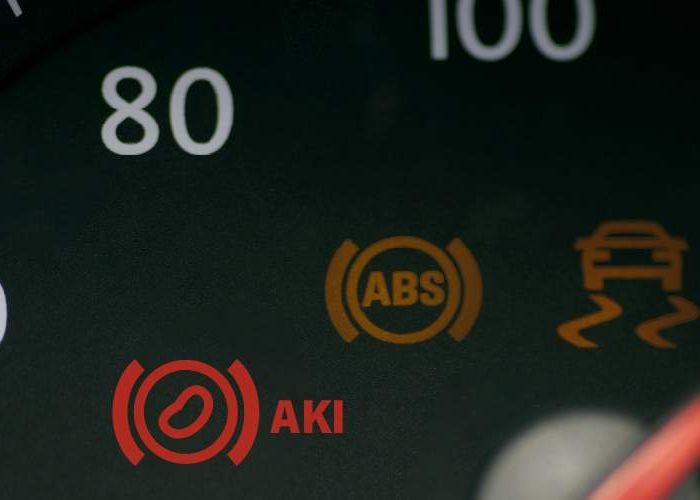

The Role of Electrolytes in Assessing and Managing Kidney Health in Pets
The kidneys, as one of the body's essential organs, have many responsibilities and functions, including regulating and maintaining fluid, electrolyte, and acid-base balance for proper blood pH. However, when chronic renal disease occurs, waste products are not filtered effectively, leading to elevated levels of potassium and phosphorus in the bloodstream and potentially excessive sodium loss in the urine.
Electrolyte testing that detects imbalances in the level of electrolytes within the body can help guide veterinarians toward specific treatments for restoring homeostasis. However, assessing and interpreting blood electrolyte abnormalities can also be an effective way for veterinarians to actively monitor kidney health in patients.
The Role of Electrolytes in the Body
Electrolytes, like sodium, chloride, and potassium, function in many different capacities in the body. Critical roles they play include clot formation, maintaining a balance between intracellular and extracellular fluid distribution, energy production, electrical conduction, and cardiac, skeletal, and vascular smooth muscle contraction.1
Sodium is the major extracellular cation in the plasma. It is closely associated with maintaining body fluids and osmolality and coordinating how the nervous system communicates with the musculoskeletal system.2 Chloride accounts for about two-thirds of the extracellular anions, and its concentrations tend to parallel plasma sodium concentrations. It is mainly responsible for acid-base balance within the body.
Conversely, potassium is the principal intracellular cation, and 98–99% of potassium lies within skeletal muscle cells.3 Potassium's most essential functions in the body include the maintenance of normal membrane resting potentials to ensure normal neuromuscular functions.
Kidneys and Electrolyte Regulation
The kidneys are the primary organ responsible for promoting urinary excretion of electrolytes when the body has excess and conserving electrolytes when the body is deficient. The non-protein bound electrolytes are filtered through the kidney's glomeruli and reabsorbed in several locations within the kidney, including the proximal convoluted tubule, loop of Henle, and distal convoluted tubule.4 Many factors can influence this process, including diet, hormones (like parathyroid hormone and aldosterone), water balance, and of course, renal function itself.
When good renal health exists and a patient becomes dehydrated, healthy kidneys help restore water balance and are responsible for 99.5% of the sodium filtering. When aldosterone is secreted, kidneys reabsorb excess sodium.5 Potassium excretion is also affected by aldosterone, and potassium levels can increase when the elimination of potassium is inhibited, causing significant acidity in the bloodstream and changing the pH.
Common Electrolyte Imbalances with Kidney Disease
Unfortunately, the kidneys can be adversely affected by infectious diseases, toxins, auto-immune disease, neoplasia, and other factors, resulting in chronic kidney disease and electrolyte imbalances. Patients who develop severe polyuria from kidney dysfunction may be unable to reabsorb electrolytes because there's a high ultrafiltrate flow through the nephrons. The result can be a tendency for the patient to develop hypervolemia, hyperkalemia, hyperphosphatemia, and metabolic acidosis.6
For veterinarians, it's crucial to recognize clinical signs associated with electrolyte imbalance secondary to renal dysfunction. Sodium levels can vary with renal disease. Some patients develop hypernatremia (increased sodium) due to hypotonic water loss. These patients can clinically present with neurologic abnormalities, like disorientation, head pressing, ataxia, behavior changes, seizures, and coma, and can proceed to death in some cases.7 Others develop hyponatremia (decreased sodium) due to decreased intravascular volume and increased antidiuretic hormone (ADH) release.
However, if it occurs rapidly, these patients will also present with similar neurologic clinical signs. Patients who develop an imbalance of chloride due to renal disease tend to develop hyperchloremia; there are no clinical signs associated with hyperchloremia, but the change in the bloodstream causes acid-base imbalance.
Potassium changes vary depending on the time frame of the disease. In acute renal failure, patients can develop hyperkalemia (increased levels of potassium), which can clinically present as bradycardia, muscle weakness, abdominal pain, and in severe cases, life-threatening arrhythmias. Chronic renal disease is more likely to produce hypokalemia (decreased potassium levels). These patients present with skeletal muscle weakness, a stilted gait, a plantigrade stance, and ventroflexion of the neck.8
Measuring Electrolyte Concentrations in Blood
Knowing how essential sodium, chloride, and potassium are in the body, electrolyte measurements should be included in a comprehensive screening with a blood chemistry panel. When blood urea nitrogen (BUN) and creatinine are measured alongside electrolytes, the veterinary team can see a complete picture of the patient's kidney function.
However, there can be inaccuracies in electrolyte measurements, leading to incorrect data points and potential missed diagnoses and treatments. Therefore, it's critical in veterinary medicine to routinely measure electrolyte concentrations in blood and understand logistically how to collect samples for the most accurate results.
For example, pseudohyperkalemia, an artifactual increase in potassium, can occur. Various factors, including thrombocytosis, leukocytosis, hemolysis, and phosphofructokinase deficiencies, can cause it.9 However, we can also see pseudohyperkalemia from sample contamination with EDTA.8 When this happens, true hypokalemia can be missed, and treatment can be delayed for potentially life-threatening cardiac arrhythmias.9
For the most accurate results, it's essential to fill blood tubes in the following order:
- Non-additive tube (serum)
- Citrate tube (coag testing)
- EDTA tube (CBC)
Once samples are collected, there are different options for measuring blood electrolytes. Serum concentrations are commonly measured with a commercially available automated analyzer or a patient-side rapid analyzer.
Electrolytes play critical roles in the body associated with organ function, including kidney health. As veterinarians continue to become more astute in assessing and interpreting lab work, we can more precisely tailor treatments to correct imbalances and monitor kidney health more closely.
References
- Dibartola SP, De Morais HA. Disorders of Potassium: Hypokalemia and Hyperkalemia. In: Dibartola SP, ed. Fluid, Electrolyte, and Acid-Base Disorders in Small Animal Practice, 4th ed. St. Louis: Elsevier; 2012:92–119.
- Scalf R. Study Guide to the AVECCT Examination, Academy of Veterinary Emergency and Critical Care Technicians, San Antonio. 2014.
- Riordan LL, Schaer M. Potassium disorders. Electrolyte and Acid-Base Disturbances, 2nd ed. In: Silverstein DC, Hopper K (eds): Saunders Elsevier; 2015.
- Pressler BM. Clinical Approach to Advanced Renal Function Testing in Dogs and Cats. Clinics in Laboratory Medicine, Volume 35, Issue 3, 487–502.
- Anderson, P. The highs and lows of electrolytes part 1: sodium, chloride and potassium. The Veterinary Nurse. 2020 Dec; 11(10): 452–458.
- Chambers JK. Fluid and electrolyte problems in renal and urologic disorders. Nurs Clin North Am. 1987 Dec;22(4):815–26.
- Burkitt Creedon JM. Sodium disorders. Electrolyte and Acid-Base Disturbances, 2nd ed. In: Silverstein DC, Hopper K (eds): Saunders Elsevier; 2015.
- Riordan LL, Schaer M. Potassium disorders. Electrolyte and Acid-Base Disturbances, 2nd ed. In: Silverstein DC, Hopper K (eds): Saunders Elsevier; 2015.
- Sharratt CL, Gilbert CJ, Cornes MC, Gama R. EDTA sample contamination is common and often undetected, putting patients at unnecessary risk of harm. Int J Clin Pract 2009;63:1259–62.







